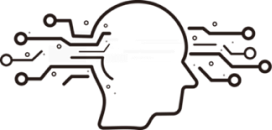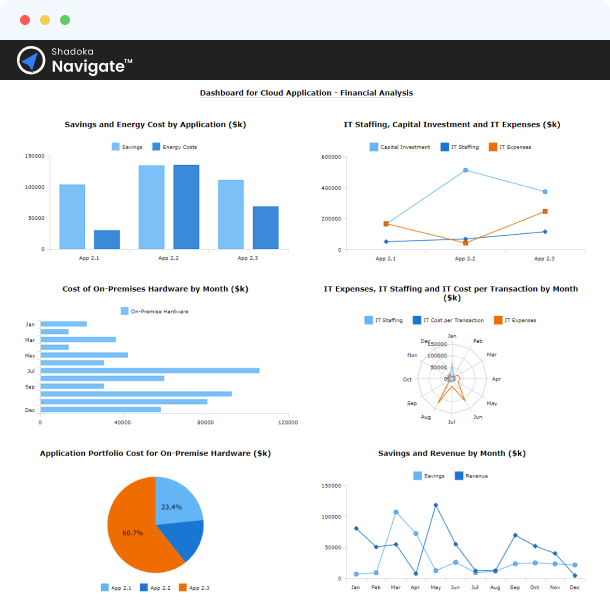We implement transformational leadership capabilities by emphasizing empathy, mindfulness, and systems thinking. Our research and practice ...
We enable organizations with strong leadership, cultural change, strategic management of technology, and ethical governance. Our holistic approach...
We enable organizations to foster a culture of innovation, from ideation to execution with a robust innovation portfolio, ensuring that repeatable innovative...
We transform organizations by advocating for a holistic approach that integrates strong leadership, cultural change,...
We enable business and technology offices (i.e. Chief Information, Technology, Innovation, and Transformation offices...
Based on years of successful multi-industry implementations, and as published in our award-winning #1 Wall Street Journal best-selling books REINVENT, Everything Connects, and LIFT, our methodologies such as the LIFTS architects transformation and innovation through its structured and comprehensive approach. The method’s approach (Learn, Investigate, Formulate, Take Off, Study) ensures that transformation efforts are well-planned and executed systematically:


Each framework provides a practical launchpad for planning that can be applied immediately, while also incorporating the need to reflect on plans and take account of the changing AI landscape over time. Using these frameworks will enable any individual or organization to develop safe, effective, and future-proofed strategies for collaborating with AI.

Each framework provides a practical launchpad for planning that can be applied immediately, while also incorporating the need to reflect on plans and take account of the changing AI landscape over time. Using these frameworks will enable any individual or organization to develop safe, effective, and future-proofed strategies for collaborating with AI.

Incorporating system thinking, our platform provides a holistic view of organizational decisions and their interconnected impacts.
We enable organizations to foster a culture of innovation, from ideation to execution with a robust innovation portfolio, ensuring that repeatable innovative practices are embedded in every aspect of business operations. We enable continuous creativity, and innovation by infusing cross-functional, cross-domain best practices based on research and practice. To us it is about setting up systemic processes that enables both micro and macro innovation as an ongoing journey. By promoting a holistic view that incorporates mindfulness and sustainability, our methods guide leadership in aligning short-term initiatives with long-term value creation and fostering collaboration across departments.

Northrop Grumman (NG) is a collection of more than 400 acquired companies that serves as a public and defense contractor. NG needed to assess, design, and create next generation organizational and client services capabilities with greater efficiency.
Shadoka team enabled the framework, processes, and data analytics needed to create repeatable and efficient management structure for:

PepsiCo has primarily grown through M&A activities. They needed to create a federated governance model that allowed them to create centralized reusable initiatives, investments, and processes for maximum ROI while maintaining individual brand operations.
Shadoka team enabled the framework, processes, and data analytics needed to create repeatable and efficient management structure for:
Assess the impact of the digital and AI initiatives against the defined KPIs. This includes collecting feedback, analyzing results, and identifying lessons learned.
A thorough understanding of what worked and what didn’t, providing valuable insights for continuous improvement and future digital and AI transformations.
Execute the strategies and initiatives outlined in the Formulate phase. This involves mobilizing resources, engaging stakeholders, and ensuring effective communication throughout the organization. It also includes deploying AI models, integrating digital tools, and automating processes.
The successful launch of digital and AI initiatives, with ongoing monitoring and adjustment to ensure alignment with strategic goals.
Formulate actionable strategies and roadmaps based on insights gained from the Learn and Investigate phases. This includes setting clear objectives, defining key performance indicators (KPIs), and outlining the steps needed to implement digital and AI solutions.
A comprehensive and actionable transformation plan that aligns with the organization’s goals and leverages digital and AI technologies effectively.
Conduct thorough investigations into existing processes, systems, and data infrastructure. This may involve data analysis, stakeholder interviews, and benchmarking against industry standards.
Identification of key areas where digital and AI technologies can have the most significant impact, along with a clear understanding of the organization’s current capabilities and gaps.
This phase involves studying market trends, technological advancements, and the specific needs of the organization. It includes understanding the potential of AI and digital technologies in the context of the business.
A well-rounded understanding of how digital and AI technologies can be leveraged to address business challenges and opportunities.
The global economic landscape is being reshaped by geopolitical tensions, trade disputes, and shifts in global power dynamics. The rise of protectionism, trade wars, and tariffs has led to increased uncertainty, forcing businesses to rethink their supply chain and market strategies. Globalization is being recalibrated, with more emphasis on regionalization and localization to mitigate risks. Political instability in key regions, such as the U.S.-China trade tensions and the Russia-Ukraine conflict, adds further complexity. Additionally, economic volatility, such as inflation, fluctuating currency values, and rising interest rates, is impacting consumer spending and business investments.
Examples: Companies diversifying market strategies, establishing regional hubs to minimize geopolitical risks, and increasing investments in risk management and forecasting.
E-commerce is now a dominant force in global retail, accelerated by the pandemic. Consumers expect on-demand, personalized, and seamless omnichannel experiences, where they can move effortlessly between online and physical stores. The demand for fast delivery, easy returns, and instant access to products has led to innovations in logistics and last-mile delivery. Consumer behavior is shifting toward experience-driven consumption, where customers prioritize experiences and brands that align with their personal values, such as sustainability or social justice. The rise of social commerce, where purchases are made directly through social media platforms, is also transforming how businesses engage with consumers.
Examples: The growth of direct-to-consumer (DTC) brands, subscription-based models, and the use of AI to provide personalized shopping experiences.
Demographic shifts are having a profound impact on economies, labor markets, and consumer trends. In developed economies such as Europe, Japan, and North America, aging populations are leading to increased demand for healthcare services, retirement planning, and age-related products. This is also placing strains on the labor force, with some sectors experiencing shortages of younger workers. Meanwhile, emerging markets in Africa, Asia, and Latin America are witnessing a youth boom, with growing numbers of young, tech-savvy consumers who are reshaping markets. As a result, businesses must tailor their products and services to cater to both aging populations and younger consumers with different expectations and spending patterns.
Examples: Increased investment in healthcare technologies for aging populations, mobile-first services for young consumers in emerging markets, and the rise of the gig economy to supplement labor shortages.
The disruptions caused by geopolitical events, trade wars, the COVID-19 pandemic, and natural disasters have forced organizations to rethink their supply chain strategies. The traditional reliance on globalized supply chains is being challenged, with many companies opting for diversified, nearshore, or onshore suppliers to reduce risk. Technological solutions like blockchain are being integrated into supply chains to increase transparency and security, while IoT sensors allow for real-time monitoring of goods and inventory. Companies are also prioritizing sustainability in their supply chains, using eco-friendly sourcing and reducing their carbon footprints.
Examples: Companies using blockchain for product tracking, nearshoring manufacturing facilities to reduce supply chain risk, and improving logistics efficiency with AI-driven predictive analytics.
Sustainability is now a top priority for businesses, governments, and consumers. As the effects of climate change become more evident, stakeholders are pushing companies to embrace environmental responsibility. The rise of green technologies—such as renewable energy sources (solar, wind, and hydroelectric power), electric vehicles, and carbon capture—is reshaping industries from energy to transportation. Consumers are demanding transparency regarding sustainable practices, leading to the rise of eco-friendly products, green packaging, and the shift toward circular economies where materials are reused, recycled, or repurposed to minimize waste. Investors are increasingly focusing on ESG criteria, pushing companies to address environmental, social, and governance challenges.
Examples: Companies setting carbon-neutral targets, sustainable supply chains, and the growth of green finance markets.
The digital transformation wave is redefining industries across the globe. Businesses are increasingly adopting advanced technologies like AI, machine learning (ML), blockchain, and the Internet of Things (IoT). AI-powered tools are now central to enhancing customer experience through personalization, predictive analytics, and real-time problem-solving. Automation in manufacturing, customer service, and operations is driving efficiencies, reducing costs, and enhancing output. Cloud computing and edge computing are enabling greater scalability and flexibility, making it easier for organizations to manage data securely. Companies that fail to embrace digital transformation risk losing their competitive edge as customers and markets increasingly demand tech-driven innovation.
Examples: AI-driven supply chain management, robotic process automation (RPA) in administrative tasks, and cloud-based collaboration tools are revolutionizing work processes globally.